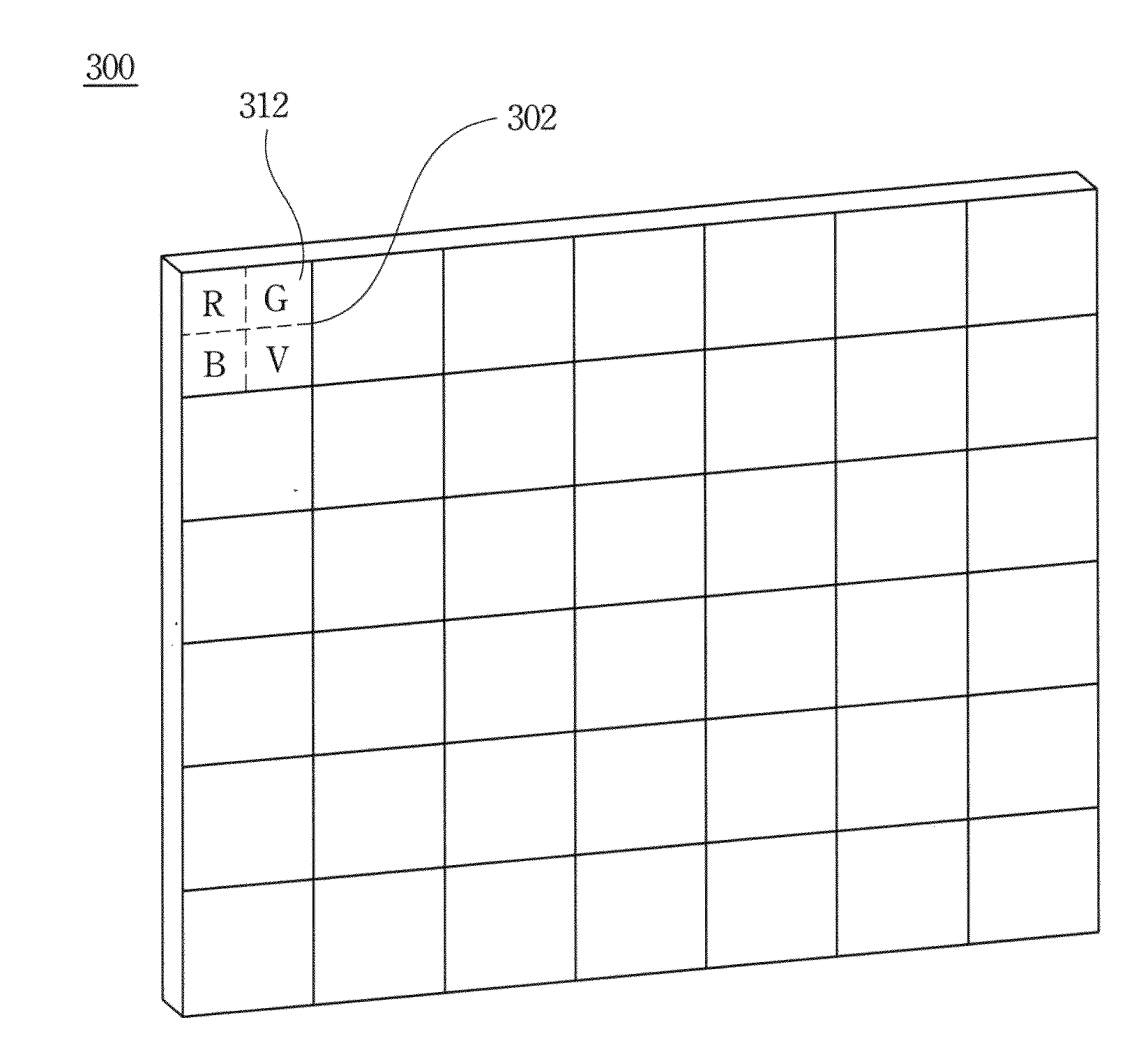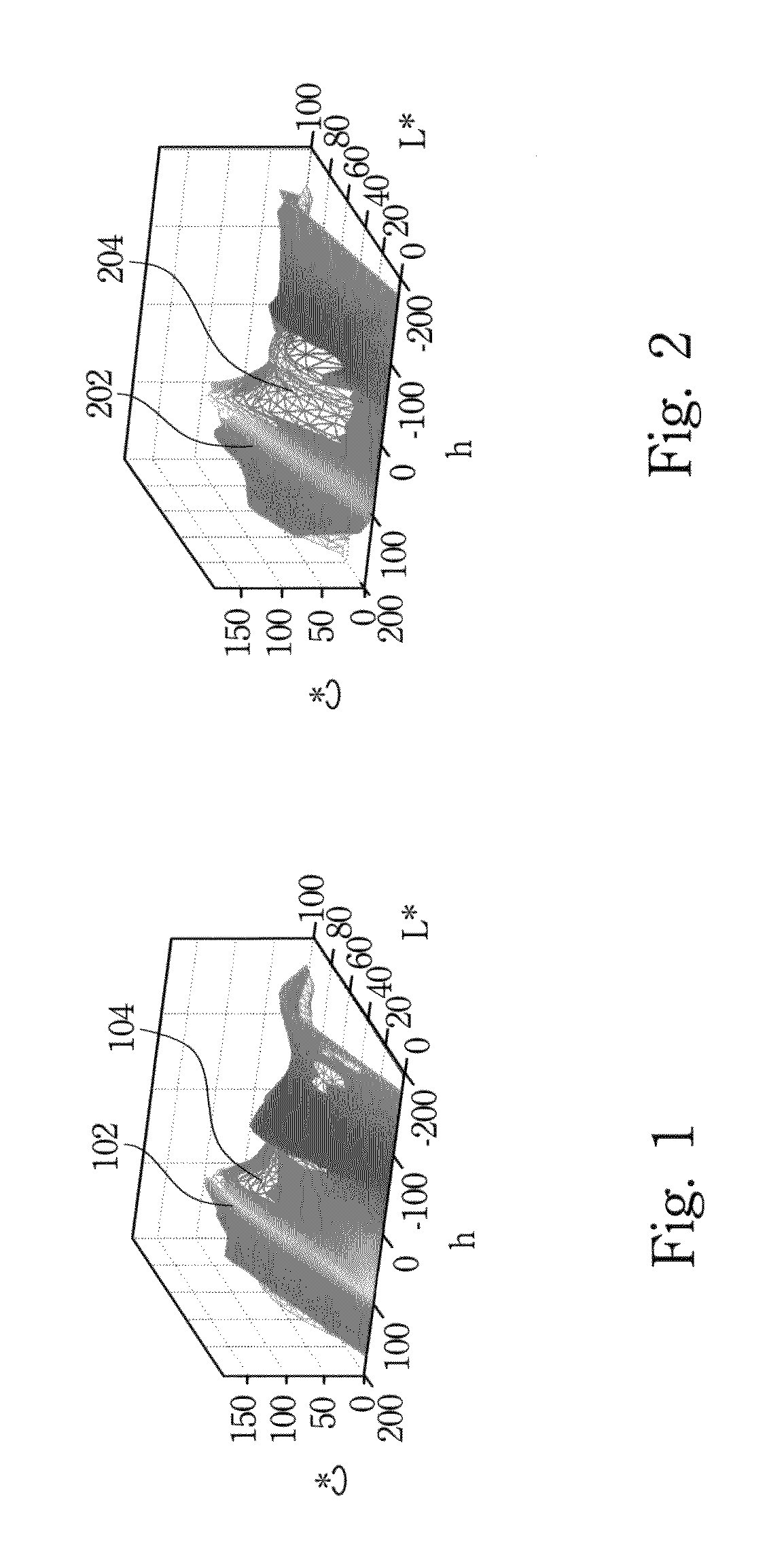Multi-primary color display and the manufacturing method thereof
a technology of color display and manufacturing method, applied in the field of multi-primary color display, can solve the problems that the three-primary color display cannot produce all colors in nature, and the effect of this method is very limited
- Summary
- Abstract
- Description
- Claims
- Application Information
AI Technical Summary
Benefits of technology
Problems solved by technology
Method used
Image
Examples
first embodiment
[0027]FIG. 5 shows the relative luminances in different experiments of the first embodiment. The vertical axis is the relative luminance ratio of a particular primary color to the white. The horizontal axis is the sequence number of the 273 sets of experiments. In FIG. 5, line 502 is the relative luminance of red primary color, line 504 is that of green primary color, line 506 is that of blue primary color, and line 508 is that of cyan primary color.
TABLE 1Reference chromatic coordinates of various primary colors.X chromatic coordinateY chromatic coordinateRed0.6960.29Green0.2680.686Blue0.1350.075Cyan0.1480.429White Point 10.3130.329White Point 20.280.29
[0028]Table 1 lists the reference chromatic coordinates of various primary colors. Each experiment set selects the chromatic coordinates of the primary colors from the surroundings of these reference chromatic coordinates for simulations. Under the considerations of gamut coverage in natural colors and the coverage balance of differe...
second embodiment
[0036]FIG. 6 shows the relative luminances in different experiments of the second embodiment. The vertical axis is the relative luminance ratio of a particular primary color to the white. The horizontal axis is the sequence number of the 152 sets of experiments. In FIG. 6, line 602 is the relative luminance of red primary color, line 604 is that of green primary color, line 606 is that of blue primary color, and line 608 is that of yellow primary color.
TABLE 2Reference chromatic coordinates of various primary colors.X chromatic coordinateY chromatic coordinateRed0.6920.28Green0.2080.672Blue0.1250.055Cyan0.4990.493White Point 10.3130.329White Point 20.280.29
[0037]Table 2 lists the reference chromatic coordinates of various primary colors. Each experiment set selects the chromatic coordinates of the primary colors from the surroundings of these reference chromatic coordinates for simulations. Under the considerations of gamut coverage in natural colors and the coverage balance of diff...
PUM
 Login to View More
Login to View More Abstract
Description
Claims
Application Information
 Login to View More
Login to View More - R&D
- Intellectual Property
- Life Sciences
- Materials
- Tech Scout
- Unparalleled Data Quality
- Higher Quality Content
- 60% Fewer Hallucinations
Browse by: Latest US Patents, China's latest patents, Technical Efficacy Thesaurus, Application Domain, Technology Topic, Popular Technical Reports.
© 2025 PatSnap. All rights reserved.Legal|Privacy policy|Modern Slavery Act Transparency Statement|Sitemap|About US| Contact US: help@patsnap.com



